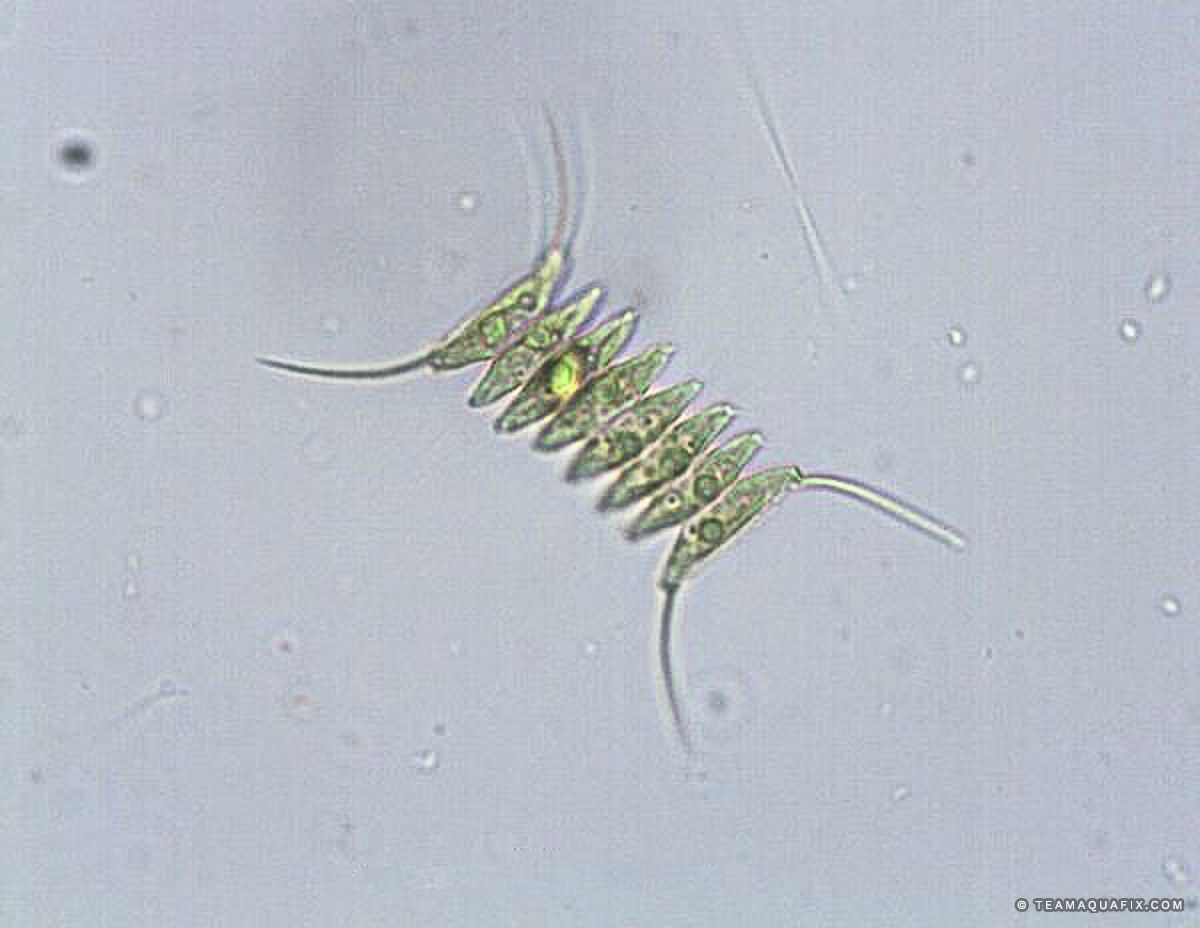
Desmodesmus will contribute to elevated suspended solids and pH, but are helpful for the reduction of ammonia, phosphorous, and nitrate.
If Desmodesmus is an issue in a wastewater lagoon it can be treated with a chelated copper algaecide such as Argos, however upon treatment it is likely to release high levels of nutrients and dead material into the water body. PondZilla Pro can help prevent negative effects in the wastewater lagoon effluent after chelated copper treatment. Many algae that grow in lagoons, such as Desmodesmus, are symptoms of high levels of sludge build-up and internal nutrient recycling. Sludge can be physically removed by dredging or a non-destructive option: Sludge Rx. This can aid in organic sludge reduction and prevent the resuspension of nutrients.
Desmodesmus is a related genus of colonized green planktonic algae that can be found in wastewater polishing lagoons with high soluble nitrogen and phosphorus. These algae consist of stacked cell colonies, however, they are sometimes found as lone cells. These algae have spines attached to the outside of their cells; when no spines are present it is an alga called Scenedesmus. The colonies’ shape and number of cell are genetically established and will not change during their lifetime. This means they reproduce more quickly than other alga. When these colonies reproduce, each cell within the colony will form a mini colony containing the same number of cells as the original colony. However, some species change the structural features of their cell walls from generation to generation based on nutrition. The most common species of Desmodesmus forms colonies of four cells in a single row, however, some species have more cells or can have cells arranged in double, alternating series. The cells in these colonies can be oval, prolate spheroid, or crescent-shaped. Occasionally, Desmodesmus can cause high effluent TSS and BOD.

39041 RGE RD 283,
Red Deer County, AB T4E 0M2
Phone: 1-888-466-0031 |
Fax: 1-888-507-9716
To place an order, please fill out the required fields below and proceed to checkout. Ensure all information is accurate, and feel free to contact our support team if you have any questions or need assistance. Thank you for choosing us!